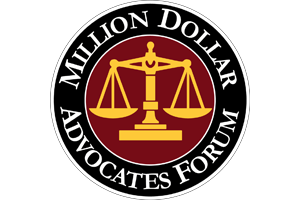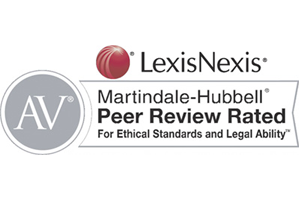Challenging Non-Party Defenses
When handling claims for negligence in Indiana, plaintiffs’ lawyers often are faced with non-party defenses, some of which are meritorious and others which appear to be tenuous at best. Because a non-party’s presence on a verdict form can have significant consequences for our clients and the verdicts they receive, it is important to aggressively deal with non-party defenses prior to trial and during the pleadings and discovery phases of the case.
For many years, Indiana plaintiffs were faced with the harsh contributory fault rule. Under that contributory fault rule, a plaintiff’s claims would fail if the plaintiff was to any extent at fault for the incident. Huey v. Milligan, 175 N.E.2d 698, 700 (Ind. 1961). To mitigate the effects of the contributory negligence common law, the Comparative Fault Act was adopted in 1983. However, under comparative fault, a defendant is allowed to plead that the fault of a person who was not named as a party to the case contributed in whole or in part to the plaintiff’s injuries. IND. CODE § 34-51-2-14.
When faced with a non-party defense, it is important to determine if the defendant timely named the non-party. The act provides two deadlines for a defendant to name a non-party. The first deadline is absolute under some circumstances, and the second is based upon reasonable promptness of discovery.
Under IND. CODE § 34-51-2-16, if a defendant is served with a summons and complaint more than 150 days before the statute of limitations runs against a potential non-party, the defendant must assert its non-party defense no later than 45 days before the statute of limitations against that non-party expires. If the defendant fails to do so, the defendant is prohibited from naming that individual as a non-party, even if the defendant is unaware of the non-party’s identity or fault in the case. McClain v. Chem-Lube Corp., 759 N.E.2d 1096, 1105-1106 (Ind. Ct. App. 2001). By having this absolute time prohibition in place, the plaintiff can head off potential non-party defenses by filing the claim more than 150 days before the statute of limitations expires.
Many times it is not possible to file the lawsuit 150 days before the statute of limitations expires and this portion of the statute is not applicable. However, if the claim is filed less than 150 days before the applicable statute of limitations expires, the defendant still must plead their non-party defenses in a timely fashion. In this situation, if a non-party is not known at the time of filing the answer, the court may allow the defendant to file additional non-parties later if they plead the non-party defense with reasonable promptness after discovery. IND. CODE § 34-51-2-16; Kelly v. Bennett, 792 N.E.2d 584, 587 (Ind. Ct. App. 2003). Although this rule does allow defendants to plead non-party defenses after the statute of limitations has run against a particular non-party, the rule does not provide them with an unlimited period of time for filing non-party defenses. As noted in Kelly, the requirement that the defendant use reasonable promptness in naming non-party defendants means “some degree of diligence in investigating any possible non-party defense is warranted.” Id (defense not allowed where seven months passed between the defendant’s answer and motion to amend to add a non-party).
If a defendant has timely filed the non-party defense, make sure that they plead it appropriately. Under the Comparative Fault Act, the defendant is required to specifically name the non-party. Cornell Harbison Excavating, Inc. v. May, 546 N.E.2d 1186, 1187-1188 (Ind. 1989). If the defendant simply names an anonymous or unknown per-son, such as “the driver of a red car,” as a non-party, the defense can be challenged. In Cornell, the plaintiff was injured while swerving to miss a dog in the road. The defendant named the “unknown owner of the dog” as a non-party. Id. at 1186. The court stated that comparative fault law requires that the defendant name the non-party rather than making “merely a generic identification.” Id. at 1186.
If the non-party defense has been filed, the plaintiff’s challenge does not stop there. The fact that a non-party is timely identified by the defendant does not mean that the non-party defense will be available at trial. The burden of proving the non-party defense is on the defendant. Throughout discovery and trial preparation you must investigate and discredit the non-party defense. This includes serving discovery, asking for defendant’s experts, and obtaining any other information about the defense. When appropriate, you should file a motion to strike or motion for summary judgment to avoid non-party arguments at trial. And at the close of evidence, be sure to ask the court to take away the non-party defense pursuant to Trial Rule 50.
There are many grounds to challenge non-party defenses, and the plaintiff should always be on guard to challenge them when justified. Unfortunately, too many plaintiffs have suffered the effects of improper non-party defenses on their verdicts. You must aggressively respond to these defenses.
BY: PAUL KRUSE











